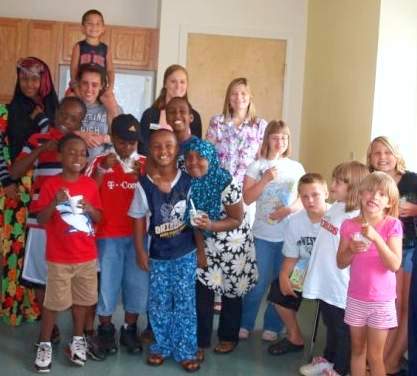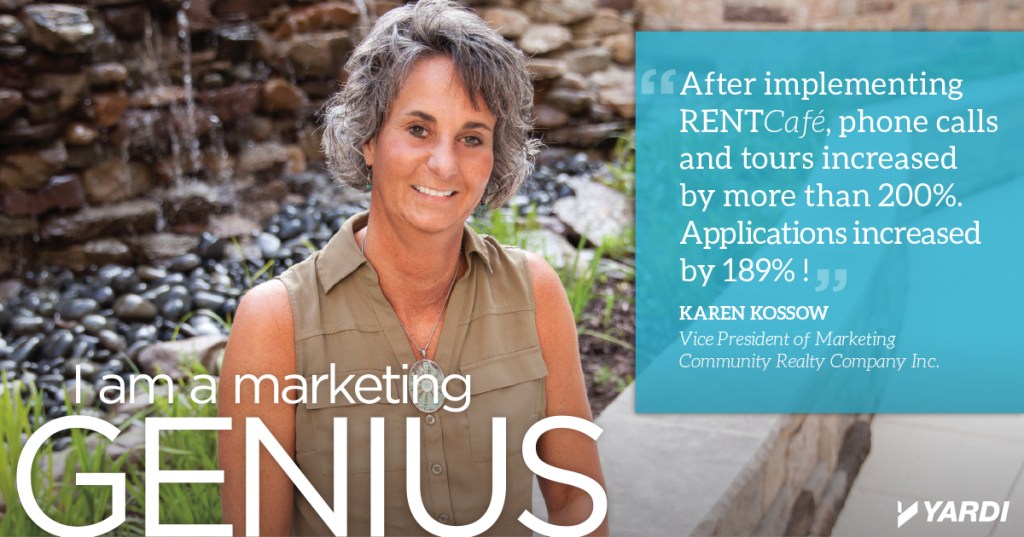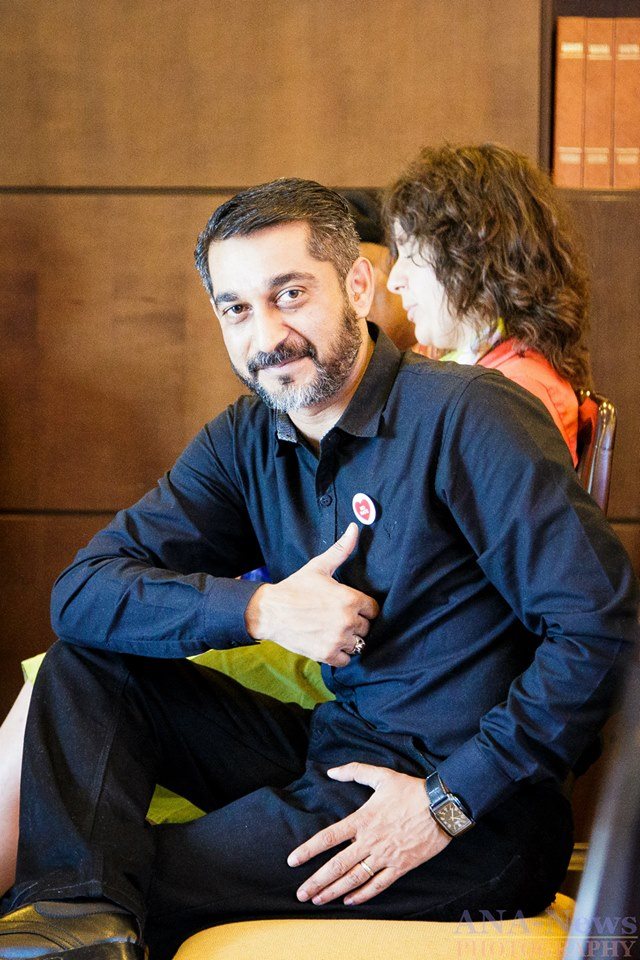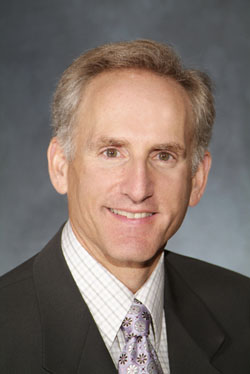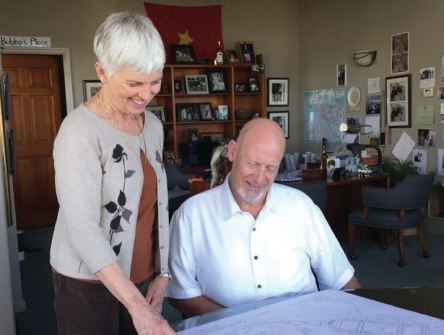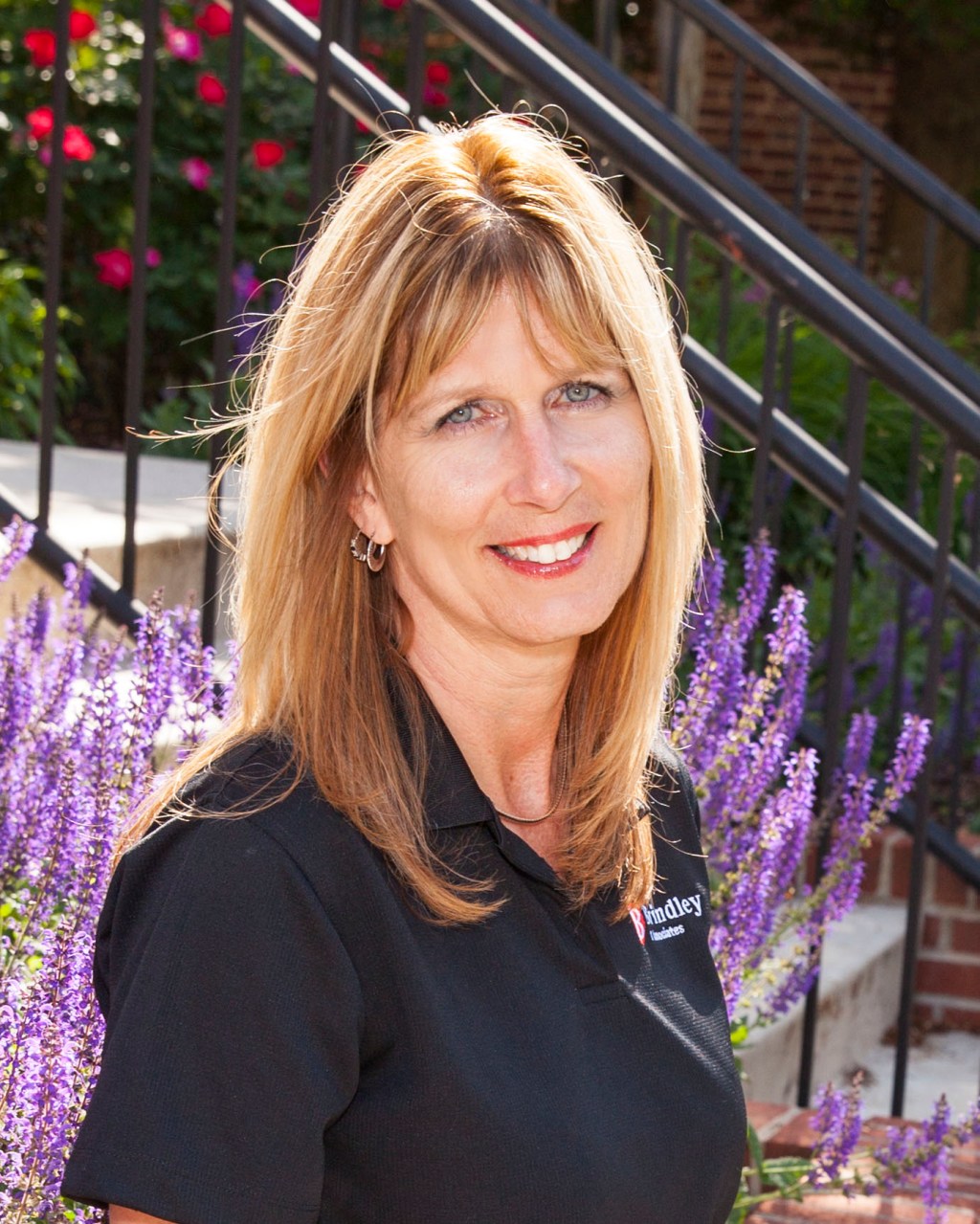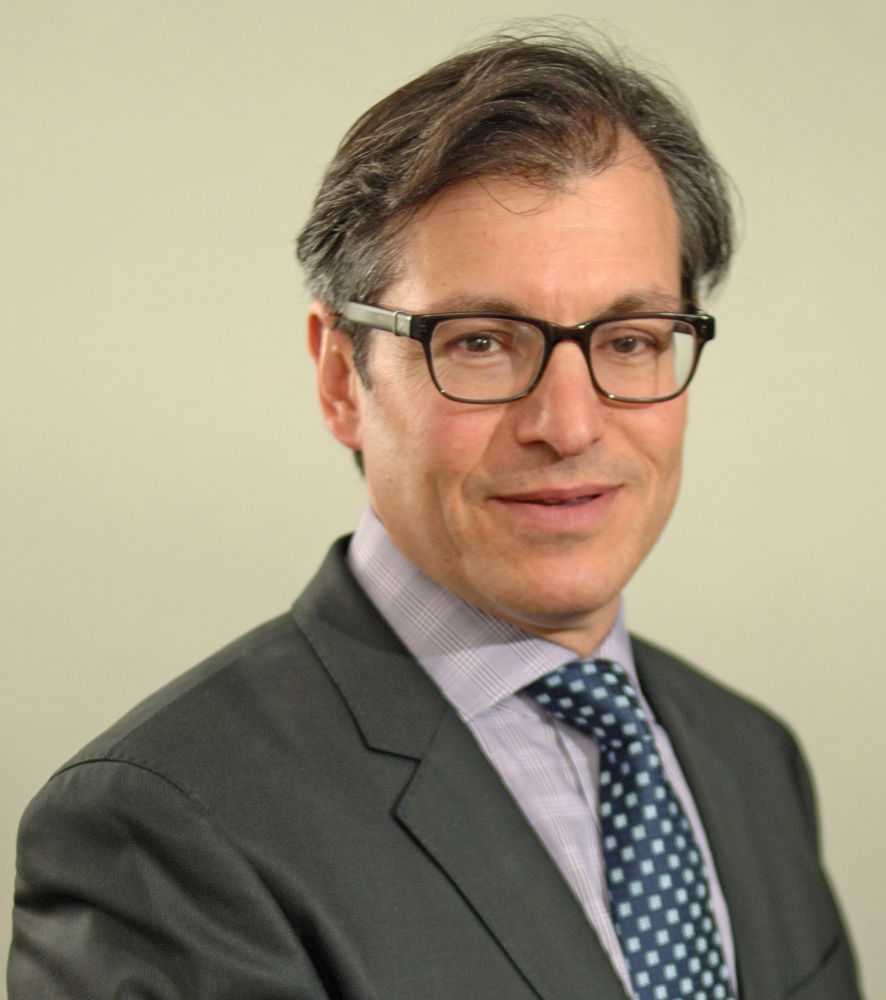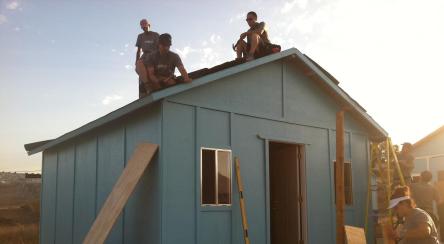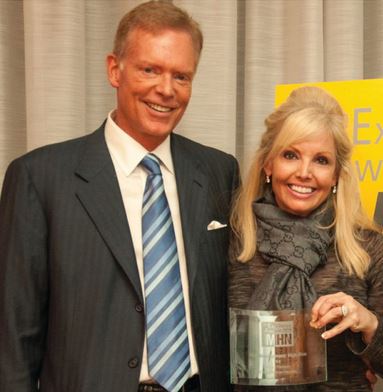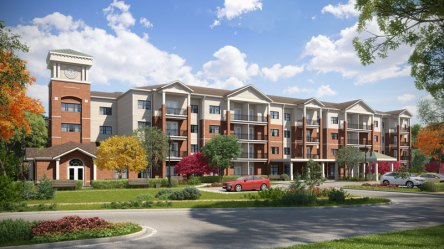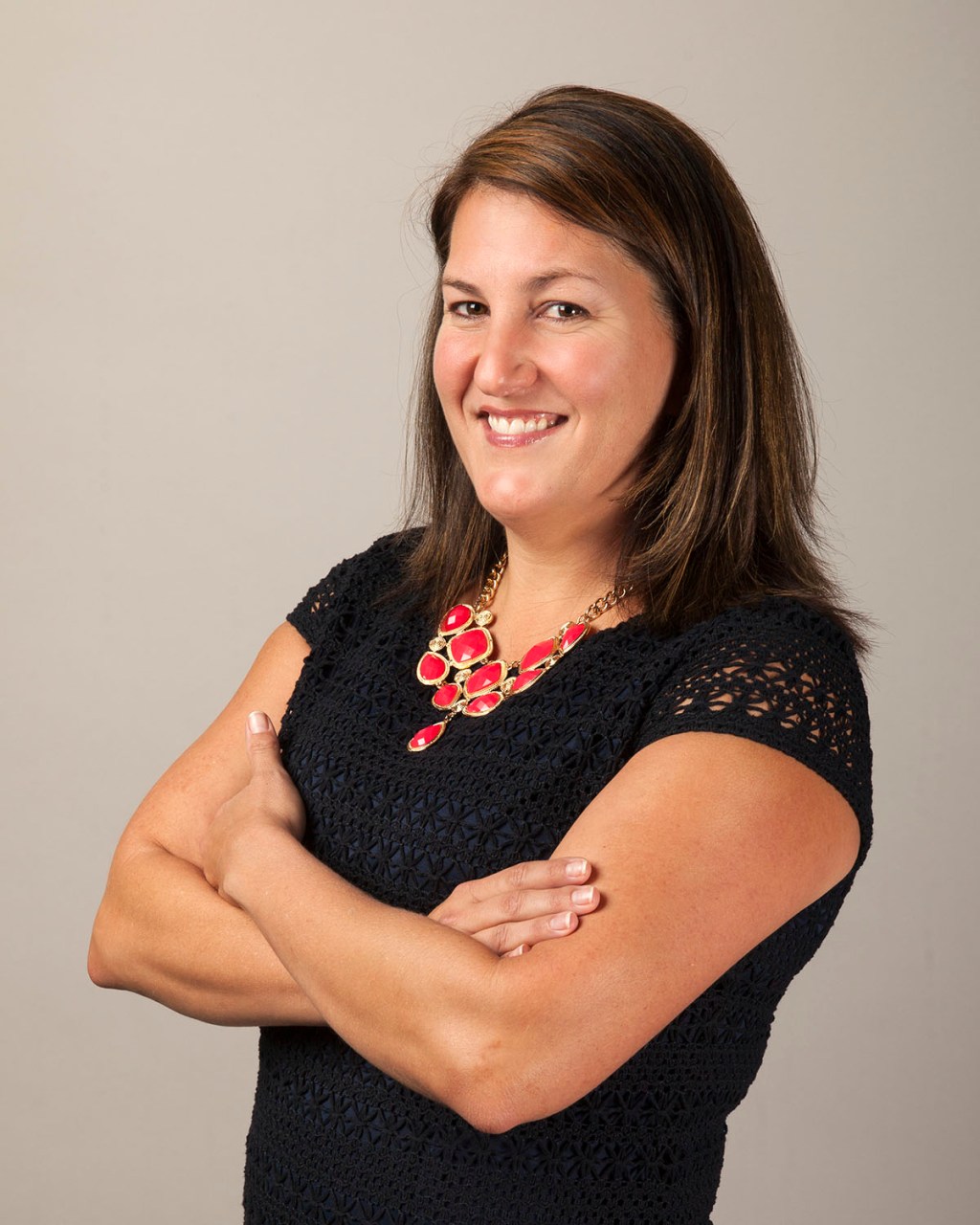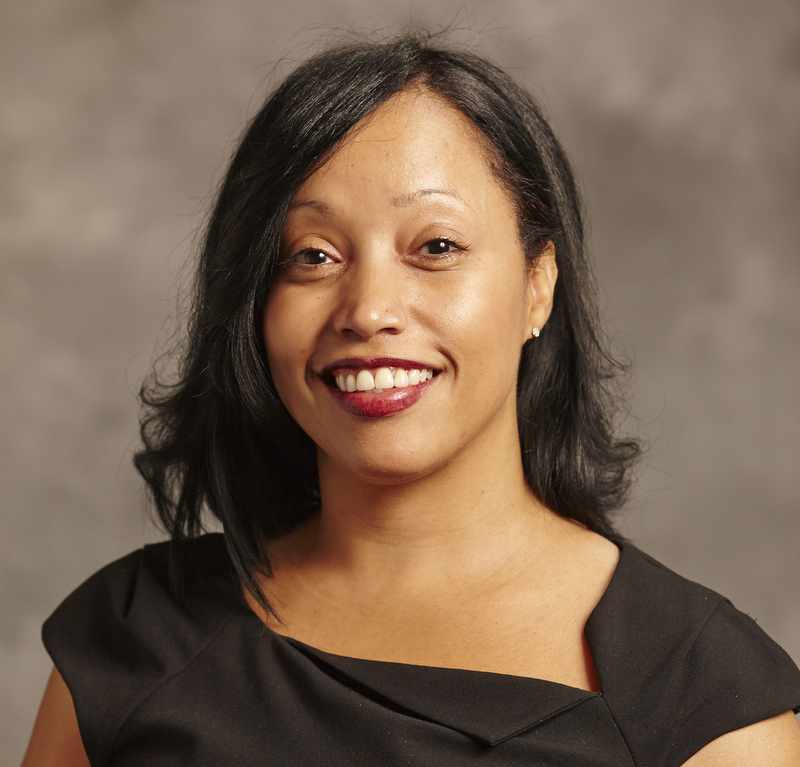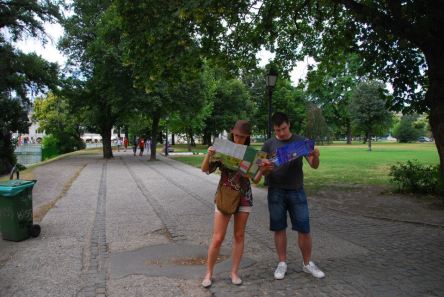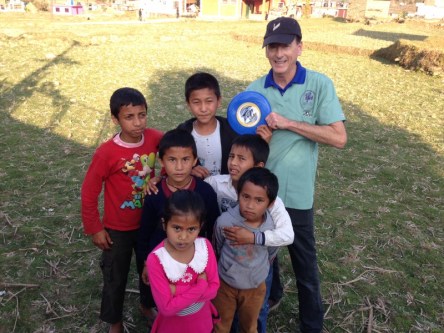At the Caleb Group, a home is much more than just a place to rest at night. The affordable housing provider, based in Swampscott, Mass., aims to improve the lives of its residents. With a strong foundation of community service created by founders Joan and Warren Sawyer, the Caleb Group has been doing good works for more than two decades. The company, a Yardi client, was recently recognized in its hometown paper, The Daily Item, with a write-up that tells the touching story of how the Sawyers, motivated by faith and a desire to help out their community, founded the company in 1992. Their original vision of service and support for residents remains strong today. “Housing itself isn’t enough. Residents and their communities flourish when they are supported by the kinds of programs and resources that Caleb’s Service Coordinators and Community Opportunity Centers provide,” the company’s website explains. Programs for residents access to services and resources that foster “community engagement, financial stability, health and family support, and youth programming.” More than 4,000 residents in 21 communities benefit. Literacy, financial counseling, continuing education and work experience are among the offered programs. The good works don’t end there. The company also provides support to Abbott House, which houses formerly homeless families in Dorchester, Mass, and an international home for domestic violence victims in San Juan del Sur, Nicaragua. Family values are strong within the company leadership. The Sawyer’s daughter, Debra S. Nutter, is President and CEO. She was a founder of the company. Her parents still serve on its Board of Directors. Yardi salutes the Caleb Group for its exceptional community service. Read more about how the company has helped residents change their lives for the...
Karen Kossow
Genius at Work
Community Realty Company is a leader in property management, leasing, and asset management for income producing properties in the Washington D.C. area and beyond, enhancing values for owner-investors and known for providing an exceptional tenant experience. We recently enjoyed an interview with Karen Kossow, Community Realty Company’s Vice President of Marketing. She talked about industry trends that are changing the way multifamily does business and shared her advice for other apartment marketers. Whether you’re an experienced pro or just getting your feet wet, we’re sure you’re going to learn something from Karen, that’s why we recently selected her to be our newest RentCafe Marketing Genius. How long have you worked in multifamily? Kossow: This is my 25th year in the industry. I started out as an activities director immediately after college and just kind of fell in love with multifamily. It gets under your skin. As the VP of Marketing, where do you find that you spend the majority of your time? Kossow: We are small. We don’t have an internal IT group. RentCafe has become such an important piece of our marketing; I spend time getting our teams trained and to buy into it. Beyond that, a lot of my week is spent analyzing results. What’s working on our websites and what’s working in the industry in general. What do you see happening in the industry right now? Kossow: We’ve heard all about the Millennials for the past five years. But to me, one of the biggest trends is really having to touch more demographics at one time than we ever have before. The Boomers are also coming in, and they’re looking for a lot of the same things the Millennials are… and they have the money to pay for it. Although the Boomers and Millennials want similar amenities, they search for apartments differently, using media in different ways. So we have to use more marketing channels today than we did in the past. And we have to make sure we’re using them appropriately to reach all the different kinds of renters. So you’re seeing a different mix of renters today than when you first started? Kossow: Yes, at one of our lease up properties 39% of our renters to date have sold a home to move in with us. What are your thoughts on online ratings and reviews? Good, bad, or necessary evil? Kossow: Definitely good for converting prospects. We put our reviews right on our websites for a couple of reasons. For one thing, it keeps visitors on your site, instead of sending them to find reviews on outside sites. For another, building changing content into the site is good for SEO. How do you solicit reviews from your residents? Kossow: We use the email tool within RentCafe to solicit reviews that we add to our sites. Then we take it a step further and make video testimonials that we embed into our landing pages. When you hit one of our property sites, within seconds you’re hearing residents talk about their experience (see it in action here). Prospects are automatically hearing something positive as soon as they find us. We’ve had people come to the property and specifically mention the impact of the videos. It’s definitely impacting our results. Why RentCafe? Why Yardi? Kossow: Having everything on one platform allows us to be more aggressive. Yardi really cares about our industry and our needs. Working with the team has been a hugely collaborative process. Sometimes it seems like anything we think of, voila it’s done! RentCafe’s capabilities evolve to match our requests. It’s always getting better, which is great. So is your day-to-day all marketing, all the time? Kossow: At work, yes, but outside of work you will find me tackling more physical challenges, including a recent surf camp I attended in North Carolina where I got my first nosebleed ever! Minutes after wrapping up our...
Ali Shah
Employee Profile, Yardi Romania
“I am a simple and ordinary person, who values the values of life,” says data entry specialist Syed Zulfiqar Ali Shah. Born in Pakistan, Ali moved to Cluj-Napoca in 2008 after falling in love and marrying a Romanian woman. He joined the Yardi Romania family in 2011 as a neighborhood researcher, but switched along the way. Nowadays he divides his time between Yardi, his family and a myriad of community outreach and volunteer activities that range from migrant outreach programs to donation drives for sick children. As part of his daily activities at Yardi, Ali deals with product data maintenance, manages databases for online commerce, platforms and print catalogs. His favorite part about working for Yardi? A professional, but friendly atmosphere, a mindset that seems to be the motto of Yardi employees worldwide. “We come from home in a good mood and return in the same mood,” Ali says, a smile on his face. That of course, has to do with his zen approach to life. Ali is known among his colleagues as someone who always has a piece of good advice or a ready joke at hand. Usually both. “To be honest, it wouldn’t be possible for me to continue all the human rights related activities and volunteering at my current level without Yardi. The friendly and relaxed working atmosphere allows me to contribute to migrant communities in Cluj-Napoca. It’s all based on humanity,’ he adds. “Yardi’s culture is a culture of humanity that appreciates and promotes volunteering and social outreach activities.” A graduate of literature and arts studies, his education and the basis of creativity helps him in his day to day activities at work. When he leaves the office however, Ali seems to grow to larger than life proportions, working tirelessly...
Michael Newman
Principal, Golub-GetHouse
When Michael Newman and Eugene Golub began their first commercial real estate deal in Poland, one of the first things they learned was that there was no Polish word that directly translated to “developer.” “The office market there was occupied by state owned companies in state owned buildings. No first class or modern office space really existed,” Newman recalled of their first trip to the city in 1989. But that was about to quickly change, and GOLUB was the first U.S. developer to begin building in the Polish capital city of Warsaw, breaking ground on its first building there in 1991. Today, their Polish arm is Golub-GetHouse (GGH). The fall of the Berlin Wall in November 1989 charted a course for the gradual opening of Eastern Europe and enhanced economic opening for domestic and foreign companies alike. Berlin also played a role in Golub’s journey to Warsaw. While working on another project with a Berlin-based company in 1989, Poland was pitched to them as a potential opportunity. “At first, we were hesitate to go behind what was then the Iron Curtain,” Newman recalled. “But hesitation gave way when we realized it was a historic opportunity.” Read on for more insight from our conversation with Michael Newman: What were the early challenges as you began working in Warsaw? Newman: What we had to explain was that they were more used to “contractors” – the norm was state-owned buildings owned by state-owned companies. There wasn’t really a concept of privately owned land and buildings. There was some funny nuance to explaining that a developer wasn’t a builder, but that the developer puts all the pieces of the private transaction together. For our first project, our development team acted as the general contractor and hired subs directly,...
Honoring Veterans
SilverCrest Properties
Yardi client SilverCrest Properties is a growing senior housing specialist with a heart the size of Texas. At its properties in Minnesota and The Lone Star state, the company strives to make the golden years some of the most enjoyable and rewarding years of residents’ lives. One initiative, Honor Flight, has become a definitive moment for countless seniors and staff. As part of its senior services, SilverCrest partners with Honor Flight to offer life-changing travel experiences. Honor Flight is a non-profit that acknowledges America’s veterans by providing no-cost transportation to the nation’s war memorials in Washington, D.C. Neal Frisch, Director of Finance at SilverCrest, has experienced the Honor Flight as a guardian. “Honor Flight is amazing,” he reflects. “It’s something that we like to do. We’ve contributed to probably a dozen different flights.” For Honor Flight, SilverCrest veterans and their staff guardians depart for D.C. before sunrise. They embark on a tour to the World War II Memorial, the Vietnam War Memorial, and the Korean War Memorial. “Many of them have never been to D.C. before. They’ve never seen the memorials,” says Frisch. “There is a big push, health wise, to get them all up to D.C. so that they can see their memorial.” Each veteran responds differently to the monuments erected in their honor, making the experience unique for guardians no matter how many times they attend. “One of my coworkers took a veteran who told him stories that he’d never told anybody else, not his kids, not his grandchildren. They sat at the Iwo Jima memorial and he cried and told stories for 45 minutes,” says Frisch. After reviewing the memorials, Veterans return to their SilverCrest communities on the same day. The return is a joyous celebration. Frisch recalls, “There was one...
4 Lessons About Renters...
From House Hunters International
For a short list of reasons, which are relatively uninteresting, I’ve recently become obsessed with the HGTV show House Hunters International (and its parent program, House Hunters). A couple of years ago, it was revealed that the elimination process featured on the House Hunters program is somewhat contrived – participants apparently have often already selected their property before they become part of the show. That doesn’t bother me too much, because the episodes that I find most interesting are those in which the participants are looking for a home to rent, not buy. Often living temporarily outside of the U.S., the reactions of Americans to rentals in different countries is telling, and brought me to these realizations about our collective renters’ mentality, circa 2015. We are spoiled with inexpensive modern appliances. The kitchen seems to be the focal point of most apartment searches, especially for the female half of the prospect party. (Most of these shows feature a heterosexual couple, usually married, with a few exceptions.) Certainly, it’s nice to have a stainless steel oven or fridge, and no one can ever argue that a dishwasher isn’t an object of great convenience. But if the appliances function without burning the place down and allow you to cook food, are they really a deal breaker if they’re not new? In the case of many renters, apparently the answer is yes. Being in the city center is apparently overvalued. More often than not, the renters presented start out their rental wish list with the desire to be close to whatever attraction has brought them overseas in the first place (typically a job, educational opportunity, arts & culture or a beachside life). But when it comes down to maxing out their budget for other items on the...
Oakmont Senior Living...
A stellar senior standard
Many couples would deem themselves successes to have raised five children. Bill and Cindy Gallaher not only did that, but also founded and built senior community developer/builder Oakmont Senior Living in Santa Rosa, Calif. For good measure, they also founded an international adoption agency. Married for more than 41 years, the Gallahers brought two daughters into the world and adopted three other children. Along the way, they’ve built more than 40 senior communities, including assisted living, independent living and continuing care retirement communities. But they have no intention of resting on their laurels. Currently under construction on four sites, they expect to begin construction on as many as a half dozen additional locations this year. Last year, Oakmont Senior Living captured the 2014 MultiHousing News Excellence Award, Best New Development: 55+ for its Fountain Grove Lodge in Santa Rosa, Calif. The development is the nation’s first independent senior community for lesbian, gay, bisexual and transgender individuals, with the option of continuing care services. The prospect of working with a partner didn’t appeal to the Gallahers, but the idea of building for the LGBT community did because they felt it would fill an important social need. The initial project undertaken in 1978 by Bill and Cindy Gallaher was a small spec house in Davis, Calif. Cindy’s contribution was choosing the finish material, and helping with some construction tasks. Bill handled the rest of the project himself, from drawing the plans to the finish work, Cindy recalls. “From that small beginning to the current day, we have worked as a team in all our development and construction projects,” she said. “I believe our success, both as a couple and as partners in business, has been rooted in a division of labor, and in the deep respect...
Remote Yardi Training...
Brindley & Associates
According to the Association for Talent Development, American organizations spend an estimated $164 billion on employee training on each year. This ranges from 31.5 -56 hours of training per employee. This valuable time is spent simply learning how to optimize performance rather than putting those plans into action. Yardi client Brindley & Associates has cut those costs with the use of one, simple software solution. Accountant Carol Vandenberghe has worked with Brindley and Associates for thirteen years. Overtime, she has seen the company grow its presence in the southeast. To meet it’s more sophisticated needs, the firm recently upgraded to Voyager 7S. The combination of expansion and new software required a more efficient way to pursue employee training. “That was the main reason why we got eLearning,” begins Vandenberghe. “It really helped with the transition, plus we had just hired new employees as well.” Yardi eLearning has helped Brindley and Associates significantly cut costs on employee education and get the most out of Voyager upgrade. “We have so many properties in outlying areas,” Vandenberghe says. “Some of those properties are four hours away. It would take at least eight hours for the property managers to drive back and forth for training. Then to come by the office and have to sit there for two, eight hour days, maybe more.” Those hours are just a portion of the resources wasted on onsite training. “Training event preparation requires a lot of planning. I figure 40-50 hours. That’s an entire week right there,” Vandenberghe says. “Then we have to bring in all of the property managers, pay for their food and hotel, that kind of thing. Plus, it’s inconvenient for the property managers to have to leave when they’ve got tenants coming in to make payments. The...
Jeffrey Kaftan
Kaftan Communities
As Detroit’s economic recovery continues, the market for modern, mid-price range apartments in popular neighborhoods like Midtown, Royal Oak and Troy is strong. Homegrown multifamily provider Kaftan Communities is celebrating its 50th anniversary as a developer and property manager this year, and has responded to the trend by changing its corporate focus. No longer building apartment communities from the ground up, Kaftan Communities is instead focusing its efforts on strategic repositioning of assets – including remodels and updates that appeal to Detroit’s largest group of renters: young urban professionals. CEO Jeffrey Kaftan describes this renter as someone who appreciates name brand fashion or wants to drive a luxury import auto rather than an American car. “There are people who want a cool place, want to be in a certain location, and I wasn’t sure many existed. There were some nicer places, but as far as cool places, there really weren’t a lot,” Kaftan said. His company has redone three such buildings off of Metropolitan in Royal Oak, and is calling the trio Metropolitan Flats. Kaftan told us about the history of his company and its new focus going into the next 50 years. How did Kaftan Communities start? Kaftan: My father started the company as a building company in 1955. As he tells the story, the nightstand next to the bed was his desk. He started building homes, and things started to go really well very early on. At the end of the year, he sat down with his accountant and realized how much he had to pay in taxes. He was lamenting to a mentor of his about all these taxes, and that mentor suggested that from an investment perspective, it might be wise to build apartments. How large is your portfolio today?...
A Day in the Life
Leslie Dabi, EAH Housing
At Yardi, we know that the software we create for our clients becomes not just a tool for better business management, but a platform that becomes a major part of their daily lives. Our clients help us understand the business challenges that they face on a daily basis, and in turn, we work to develop increasingly advanced solutions that improve efficiency and make life easier. Earlier this spring, one of our clients in the affordable housing industry, Leslie Dabi of Marin County-based EAH Housing, invited us into her life to see why she’s passionate about her work as Business Systems Director. For 45 years, EAH Housing has built a portfolio of residences that today serve over 20,000 seniors, families, students, people with disabilities, frail elderly and the formerly homeless. We also learned a lot about Leslie’s everyday life. She loves interacting with the site staff at each of EAH Housing’s Bay Area communities, spends free time with her family and walking her dog, and is especially passionate about the San Francisco Giants baseball team. We joined her as she had the chance to take the field at AT&T Park and steal second base – a true thrill for any baseball fan. Join us as we take a look at a day in the life of just one of our exceptional Yardi...
Project Mercy
Building Homes + Hope
Yardi proposal writer Lexi Beausoliel and her husband, Matthew, can call themselves homebuilders – multiple times over. Each year, the Santa Barbara couple makes at least one trip to the Colonias of East Tijuana, Mexico, to assist with a Southern California home building non-profit called Project Mercy. Since 1991, volunteers participating in the project have constructed hundreds of homes for impoverished Tijuana residents living without a nearby water source, indoor plumbing and other basic utilities that Americans take for granted. Due to the positive impact of the experience, this summer the Beausoliels decided to kick it up a notch. Rather than organizing just one team of volunteers to complete just one home, they decided to aim for five – enough to build five houses for families in need, completed in a single day. In addition to the manpower, they are hoping to fundraise nearly $20,000 to cover the building cost. “Instead of just one house, we can build a small community,” said Lexi Beausoliel, who credits her spouse as the driving force behind the quadrupled effort. “(Matthew) has had such a great experience doing this, and felt like it would be really impactful to gather our friends, colleagues, and families together to build a group of homes in one day. It will be like building a village.” In order to qualify for the assistance of a Project Mercy volunteer team, the residents receiving the homes –who own the land where the simple residences are constructed – must contribute significant sweat equity by pitching in on projects in advance of their own build day. And they don’t cease contributing when their own properties are complete, either. “Families that we have built for the year before always come back and help. It’s really cool to see...
Meet the Fifields
A winning real estate duo
When Steven and Randy Fifield discuss what sets their company apart from its competitors, they often use a hockey analogy. They speak of being able to “anticipate where the puck is going,” as Randy Fifield says. It’s a fitting metaphor to describe the couple whose companies, Chicago-based Fifield Companies and Los Angeles-based Century West Partners (a Yardi client), have developed such trendsetting properties as Alta at K Station and The Californian on Wilshire. The Fifields display a Gretzky-like ability to visualize the course of action before it happens and be there before their rivals. That’s true whether they’re blazing development trails on the fringes of Chicago’s Loop or rigorously researching the lifestyle passions of distinct renting cohorts in L.A.Little wonder Fifield Companies captured a 2014 MHN Excellence Award for Best New Development: High-Rise with K2, its 34-floor, 496-unit apartment community in Chicago’s increasingly hot West Loop. In February, the couple unveiled their newest Chicago-area project, E2, a 356-unit luxury residential tower in near-north suburban downtown Evanston. Charles Huzenis, principal of Chicago’s JRG Capital Partners, has been a real estate investment partner of the Fifields for 10 years. “They have great vision well in advance of others, and that’s totally displayed in their K Station projects,” he said. “When that deal first got going, it was kind of no man’s land out there. Nobody was willing to bid on those deals when it was just raw land. Now every institution in the country wants a piece of that area.” Elissa Morgante, principal of Evanston’s Morgante-Wilson, an acclaimed, high-end residential architectural firm, served as architectural interior designer at E2. “They are very passionate about what they do,” she said. “They have a vision. They give you direction as far as the uniqueness and ‘wow’ they want....
Miller-Valentine Group...
Stylish Senior Living
As the nation’s apartment industry revels in Gen Y’s affinity for apartment living, developing high-density, high-amenity projects in urban centers across America, there is another force shaping the industry: aging Boomers. In 15 years one in five Americans will be 65 and older and the 50-plus generation will swell by 23 million individuals, reaching 132 million, data from the Joint Center for Housing Studies of Harvard University shows. This high-velocity growth is already spurring concern within the industry in regards to providing adequate housing to the nation silver-haired demographic. One company that has its eye on the future and is planning to meet the needs of aging Boomers is Miller-Valentine Group (MVG). Founded in 1963, Miller-Valentine has been developing, building and managing multifamily housing for over 30 years. The company’s portfolio includes both luxury and affordable housing, as well as senior and military housing. With a presence in 17 states, MVG is the 24th largest owner of affordable real estate in the country and has developed in excess of 13,000 units. While the company continues the deliver non-specialized apartment housing too, shifting American demographics are evident in the company’s development pipeline. Of the seven apartment communities that will open through summer 2015 three are designed for adults 55 and older and one is targeting residents 62 and over. Miller-Valentine’s independent living communities are designed to meet the needs and desires of adults over the age of 55. MVG collaborates wit h federal and state housing assistance programs to deliver quality housing for aging adults at a moderate price. To accommodate the active lives of its residents, MVG offers home maintenance-free independent living, with amenities such as community rooms, walking paths and community events, ensuring social, educational and recreational opportunities. One such community is Ashley...
Wood Residential
Seeking enhanced efficiencies
With demand for new, high-quality urban apartment projects on the rise nationwide, Wood Residential has been busy. Parent company Wood Partners builds, positions and then sells Class A apartment communities in the nation’s most popular major cities. Wood Residential’s job is to lease up the properties at the highest rate, providing a strong residency foundation for incoming ownership. Wood Residential Services launched in 2010 with three properties and less than 1,000 units in its portfolio; it expects to close the 2014 calendar year with 41 properties and 10,000 units under management across the country. As Vice President of Operations Jillian Kral recently explained, those numbers are always in flux due to the company’s business model, which makes her job challenging and exciting at the same time. “The challenges are all very positive. Things move quickly, giving us a very short window to execute as a merchant builder. If we miss that window, we don’t get another chance to try again and we’ve lost opportunity and profit for our developers,” Kral said. A 9-year Wood Partners veteran, she worked her way from the sales and marketing side of the business, to asset management, and now focuses on technology, operations, policies and team building. In order to create the smartest process for lease-ups, stabilizing properties and then turning them over, Kral and her teams have adopted an increased number of Yardi products. Over the last two years, they will have implemented the bulk of the Yardi multifamily single solution stack. “With most of our portfolio, we have a 12–18 month hold time which is why it’s so important for us to have streamlined processes and efficiencies that focus on sales while increasing rents and velocity, ultimately resulting in a profitable sale of the property. The first...
New Directions
Helping with housing
Since 1971, New Directions Housing Corp has committed to building and preserving a sense of community. The Kentucky-based nonprofit has expanded its portfolio to include real estate development, asset and property management, resident services, home ownership preservation, and community building and organizing. “I don’t know what we do, but we have to find a new direction,” uttered Father Ben O’Connor to his parish. In 1969, the group had the will to help their struggling community but was unsure how to go about it. One small housing project followed another. Soon, outreach efforts extended beyond Louisville, Kentucky and into Floyd and Clark counties of southern Indiana. Today, New Directions Housing Corp, a Yardi client, manages 1,000 affordable housing units, renting to nearly 1,000 low-income families. The organization repairs and restores approximately 200 houses each year, focusing on projects that help the elderly remain in their homes while creating safe, accessible abodes. New Directions has joined forces with NeighborWorks America and Metro United Way to achieve their goals. To address the unique needs of every community, New Directions hosts The Neighborhood Roundtable every two months. Community members gather to create practical, efficient plans that will make their neighborhoods more stable and cohesive. Residents can take pride in the changes that take place because they are an integral part of the process. They work side-by-side with New Directions volunteers and staff. “We don’t just work here. We believe in what we do and give 150% to our mission,” states Bridgette Johnson, Director of Property Management. There are numerous ways to get involved but Repair Affairs have become the most popular event for volunteers and staff members. “We start really early with a kickoff breakfast around 6am,” explains Janice Hill, Management Information Systems Director. “Some volunteers help with...
Post Properties
Pushing Innovation Forward
At Atlanta-based Post Properties, standing still is simply not an option – for executives and site level employees alike. In the last year, the company has taken on a major technology overhaul, converting from a disparate, multi-system approach to a single stack solution. The transition involved significant investment in change – not just from the perspective of making a major technology purchase, implementing a new system and conducting portfolio-wide employee training – but outside of the company as well. As the first user of Yardi’s VendorCafé, Post introduced more than 1,000 vendors who do business with the company to a dynamic new system for compliance, bids and invoicing. “You want to streamline your processes and you want to reduce risk. We’re a public company. We found that with Yardi we reduced our number of integrated platforms drastically – from 40-plus applications down to about 8,” said Janet Ham, Vice President of Information Technology. Post Properties has interests in 22,650 apartment units in 58 communities, spread over 9 markets. Moving to a single stack allowed Post to achieve myriad efficiencies, from enhanced leasing and resident services, to better mobile maintenance processes, to a potential industry-changer with the use of VendorCafé. Read on to learn about what they achieved. Maintenance goes mobile Equipping apartment maintenance engineers with smartphones and mobile apps that deliver work orders and reporting capability is the clear trajectory for the apartment industry, and Post had immediate buy-in from their maintenance teams. “We’ve been wanting to implement a mobility product for our engineers for years. But there just wasn’t a fully-integrated product until now,” Ham said. Yardi Maintenance Mobile keeps maintenance specialists in the field and helps them keep closer track of scheduling, supplies, project completions and resident satisfaction. Work orders are synced with Yardi Voyager 7S, so that any staff member needing information on a project has easy access. Residents can submit work orders and receive progress updates through their RentCafe resident portal or mobile app. They can also review the service and completion promptness after the work is complete. “I’ve seen my time management get so much better with Yardi because of how I’m able to access the work orders on my smartphone. Maintenance Mobile has helped me save time in that I don’t have to print the work orders. I can map out my whole day and give certain spaces for emergencies and such. I have the ability to add and drop work orders, and sign them off in the field,” said Wesley Fonseca, a Post Properties maintenance technician in Atlanta. Centralized leasing With 11 properties in Uptown Dallas, Post Properties has enhanced efficiency by leasing all 2,300 units in those buildings from a centralized leasing office. Prospects are introduced to the available units and floor plans that might meet their needs with the help of RentCafe CRM, a mobile application that makes it easy for leasing consultants to display photos and features of multiple apartments at different communities. “Their goal, when they walk out of that office with a prospect, is to pare it down to 2, not more than 3 communities that they want to see. They’ll fine-tune what that prospect is really looking for before they leave for the tour,” said Laura VanLoh, Senior Vice President, Post Apartment Management. Then it’s time to hop into a Post-branded Toyota RAV-4 for a site visit, which hopefully culminates in a completed application and approved lease. But if the first community isn’t right, a tablet on hand is another way to keep the prospect interested. “It’s great for when they are on site, and if the prospect feels the apartment home they are standing in does not fit their needs, they can take a look at other options,” VanLoh said. Resident services After move in, Post Properties aims to supply residents with superior quality of life, both through excellent properties and positive consumer experience. The...
Alfrieda Green
Urban Innovations
Beginning this June, the city of Chicago has mandated utility benchmarking for all commercial buildings larger than 50,000 square feet. Urban Innovations, which manages 11 properties totaling 750,000 square feet in the Windy City, is one of a handful of property managers that already has nearly 8 years of such data already in hand. Yardi client Urban Innovations started benchmarking utility use at all its properties back in 2008. Alfrieda Green, Vice President of Property Management for the firm, recently shared why the company came early to the sustainability challenge and how its owners and tenants have benefited. When did Urban Innovations start benchmarking utility performance and why? Green: Around 2006-2007, sustainability suddenly became a hot topic. We had some of our tenants come to us and require-LEED certified space. At that point, once there is market demand, you have to educate yourself. I earned by LEED AP designation with an operations and maintenance specialization. The more I learned, it became clear that this was about operational best practices and sound asset management as well as meeting our tenant needs. It was clearly something that could have financial benefits and operational benefits, as well as customer service benefits. So you started tracking utility performance, and what did you learn? Green: Our first initiative was to benchmark every building in our portfolio, and give ourselves a baseline on how are we performing. It gave us some really interesting information on how our buildings were performing from an energy efficiency standpoint. It really directly correlated with where that particular property was in its life cycle. If the building had older equipment, it made sense for it not to be quite as efficient. But we also found that some buildings that had older equipment had had strategic...
Balázs Székely
Yardi Romania
“If I could have any superpower in the world it would be X-Ray vision, no doubt about it. I mean, come on, who doesn’t want to have X-Ray vision?” laughs Balázs Székely, an enthusiastic member of Yardi’s publishing team. The 25-year-old aquascaper and Red Hot Chili Peppers fan joined Yardi in October 2013, after a couple of stints at college newspapers and regional radio stations and he’s been loving every minute of it. “I studied journalism and so far, I have to say, being a journalist turned out even better than I imagined! I work for a vigorously growing company and I’m surrounded by young professionals… As a bonus, my job is completely independent from the local political scene, which is a privilege in this field. I mean, what more could a journalist my age ask for?!” he says, hinting at the colorful Romanian political world. As an associate editor for Multi-Housing News and Commercial Property Executive, Balázs covers the most important commercial and multifamily real estate happenings in Miami, Orlando, Atlanta and Tucson. He’s constantly on the lookout for major transactions, new project announcements and keeps in touch with developers that are active in his markets. Balázs also writes market reports based on quarterly performance indicators and is part of the international news team, which covers the most relevant real estate news from around the world. “I like diversity in my work, so I’m always happy to contribute to the corporate blogosphere,” he says, referring to his posts for Point2Homes and PropertyShark. Among Balázs’s favorite parts of working at Yardi is that he gets to do what he does best – write – and that he’s able to pursue this passion in a dynamic and nurturing environment. He also appreciates the constant improvement...
Holistic Senior Care
From Senior Star
Seniors are the fastest growing segment of the population, with more than 16 million seniors in need of housing by 2050. This previously underserved population has taken center stage as a national housing priority. Yet before the construction and investment boom began, Yardi client Senior Star was providing superior care for seniors and their families. The tradition holds strong as the company continues to receive accolades and recognition for its services. For Letitia Jackson, Vice President of Corporate Engagement, reverence for seniors sparked her interest in senior housing. Senior Star’s stellar track record encouraged her to forge a career with the company that has endured nearly 20 years. “Just as many of us in this industry do, I have a true appreciation for the people who paved the way for us,” begins Jackson. “I entered senior housing through my employment with Senior Star and have remained dedicated to the industry for over 18 years. We can honor residents in the waning years of their lives, filling their lives with joyful, purposeful moments while reducing the time adult children spend in caregiving – increasing the meaningful moments spent with their parents.” Those meaningful moments become increasingly precious as seniors reach the later stages of life. The American Health Care Association reports that the average age of assisted living residents is 85 years with 42 percent having Alzheimer’s disease or other dementias. One in three American seniors over the age of 85, and one in nine who are 65 and older, has Alzheimer’s disease. Dementia can significantly reduce the quality of life that seniors experience. While there is no cure for dementia, Jackson wants to help families cope with the illness and find a way to move forward. She selected Senior Star because it committed to providing...
Project for a Village...
A journey to Nepal
Yardi CSD manager Terry Kelly and his wife Pam took the trip of a lifetime to Nepal this spring, but they weren’t on a typical tourist agenda. Instead, the focus of their visit was to volunteer at a pop-up health clinic, called a Health Camp, in the foothills of the Himalayas. The two-day medical outreach was organized by Project for a Village, a non-profit started by Kathy and Rene Perez-Silva. Terry Kelly and Rene Perez-Silva attended college together at Georgetown, and since the couple began their trips to Nepal four years ago, the Kellys were interested in lending a hand. After 22 hours of flight time (including 5 layovers) and wrangling 400 pounds of luggage that included medical supplies, they arrived in Kathmandu, Nepal’s capital. “We carried over 250 pounds of vitamins and de-worming pills to distribute to the mothers of the small children (enough vitamins for a year’s supply for each child). We also took multiple duffel bags full of essential medicines to treat the common complaints,” Terry Kelly explained. Prenatal vitamins and a health outreach project focused on preteen girls were also distributed. “Many Nepali people become dependent on foreign aid groups coming to their village to provide free doctors and medicine through health camps,” Kathy Perez-Silva relates in the Project for a Village blog. “The shortage of doctors is severe and the pay is so low that most of the doctors want to leave Nepal after they finish school to work in the West.” During the two days of clinic visits, 1,000 people were treated by 16 doctors, with assistance from nurses and translators. Many of the ailments were routine, including aches and pains from physical labor in the fields, and digestive discomfort connected to poor nutrition and spicy food. Up...

